 Last week, our school board approved a preliminary budget for the 2020-2021 school year with a projected deficit of more than $10 million. It appears that this will be a budget year as challenging as those SDoL faced in the early 2010s.
Last week, our school board approved a preliminary budget for the 2020-2021 school year with a projected deficit of more than $10 million. It appears that this will be a budget year as challenging as those SDoL faced in the early 2010s.
You may have read in LNP + LancasterOnline that it would take a tax increase of more than 8 percent to close this gap, which is not an option the school board wants to consider. Instead, we must do the hard work of aligning priorities, ensuring we are investing in them and then adjusting or sunsetting expenditures that do not align with those priorities.
This is not a time to panic. We know we need to make difficult decisions, but we have been here before. We remain committed to our broad priorities, especially teaching and learning. Let’s work together to craft a budget that reflects those priorities.
How we got here
The two largest expenses in our budget are salaries (40 percent) and benefits (26 percent). But many expenses are out of the board’s control. Costs for pension contributions (35 percent of payroll), special education and cyber charter school tuition are mandated by the state. They make up tens of millions of dollars in expenses every year.
On the other side, local taxes make up only about 40 percent of our revenues, and the assessed value of taxable properties in our district is largely flat from year to year. Over the past several years, our board has prudently raised taxes—less than allowed by law, and significantly less than the increase in our operating budget. We cannot balance our budget through tax increases alone.
Fair funding
As I wrote January 15, I do not believe the state Legislature is doing its part to help us. While state subsidies make up more than half of our revenues, they do not even keep up with expenses. Our average increase from the state over the past three years is 1.5 percent.
Nor are state resources allocated fairly. The state’s bipartisan funding formula would provide tens of millions of dollars in relief to our schools and taxpayers—if lawmakers used it. But only a little more than 10 percent of the state’s education funding is distributed using the formula.
The formula takes into consideration the unique programs we offer to help close the achievement gaps for our students. Early childhood education ($3.3 million annually), social work and mental health ($2.2 million for student and family resource specialists) and programs for English learners ($8 million) are just some of the programs unique to or much larger in SDoL.
Our options
Our school board has three broad options: raise taxes, adjust or eliminate programs and/or use fund reserves to close the deficit. We want feedback on these options. What are some ideas you have on how the district can balance the budget? Make suggestions, view other ideas and rate the ideas you think can make an impact.
We will collect these ideas and provide a summary for the school board in the coming months.
Our community has stepped up and worked together to address budgetary challenges in the past. We look forward to reading your suggestions.
